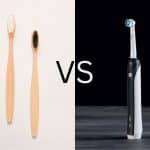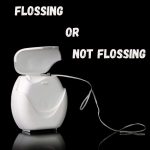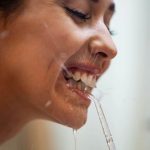Water flossers are an invaluable tool for anyone with a love for teeth or maintaining their oral health. While they’re not exactly a new invention, the number of people who have one and how well they work continue to grow. A water flosser is a type of flosser that works by using water pressure to remove food particles and plaque from between the teeth. The resulting cleanliness and freshness of your breath can be improved dramatically. However, you might wonder if this is the right tool for your dentist-free home. After all, it is just a flosser – what can it do that another dental tool cannot? This question will be answered in this article that explains everything you need to know about cavities between teeth, how water flossers help fix them, and whether or not they are a good fit for your home.
How Does a Cavity Between Teeth Be Fixed with a Water Flosser?
The main purpose of a water flosser is to help remove bacteria and other harmful microorganisms from between your teeth. The device is connected to a pipe that is about six to ten inches long and has a flexible nozzle attached to the end. By using the nozzle and rotating the pipe, water is forced through your teeth and into the back of your mouth. Depending on your dentist’s instructions, you may be able to continue to floss once the infection is gone. You can also choose to use a mouthwash to get rid of bacteria that has built up in your mouth during the infection.
The 3 most common types of Cavity Between Teeth
The most common types of Cavity Between Teeth (CBT) are milk teeth (toothed), canines (points), and incisors (lining). When teeth come into contact with each other, milk teeth come into contact with tooth enamel and can develop cavities. Likewise, canines and incisors can come into contact with one another and create small cavities in the lining between the teeth. Milk teeth are relatively easy to fix, and can be treated with toothpaste and a gentle cleaning. Canine teeth are more problematic because they lack enamel and are more likely to develop cavities. Incisors are more like burrs and may need to be removed if they are causing a cavity.
The effectiveness of different flossing techniques
There are many different types of flossing, and they all have their own unique properties when it comes to removing bacteria and plaque. The following are some of the more popular techniques, and the effectiveness of each one will be discussed below. Bruising: The easiest type of flossing to perform, this technique involves placing the floss between your teeth and using your regular brushing movements to remove the bacteria and plaque. Switching Back: This type of flossing is used when you have fresh toothpaste, but you’d prefer to use a different flavor or type. In this technique, you’re supposed to use the opposite flavored floss to remove the bacteria and plaque from your teeth. Stripping: This is the most aggressive type of flossing and is only recommended for sensitive teeth. It involves pulling out all the stops, and you’re supposed to use the floss in the opposite direction of normal brushing to remove as much of the bacteria and plaque as possible.
How to Use a Water Flosser for Your Cavities
There are many different types of water flossers, and each one has its own specific uses. Before we get into how to use a water flosser, it’s important to understand exactly what type you have. There are 2 main types of water flossers: manual and motorized. A manual water flosser is the most common type and is connected to a pipe and pressure tank. This type of flosser is by far the easiest to use. You just need to fill the tank up with water, connect the flosser to the outlet, and turn it on. Most water flossers have an automatic shutoff feature that automatically vomits the water back into the tank when you’re done flossing. If you choose to use a manual water flosser, you’ll need to use a soft flossing technique to prevent hurting your teeth. If you have sensitive teeth, harder floss may be better for you.
Conclusion
Cavities between teeth can be a pain, but a water flosser makes them bearable. The device connects to a water supply and has a flexible nozzle that you can place against your teeth. By using the water pressure from the nozzle, you can floss between your teeth and clean them thoroughly. While a mechanical flosser may be more effective for removing hard-to-reach areas like between the teeth, a manual flosser is always better for less-traveled areas. A water flosser is a type of flosser that works by using water pressure to remove food particles and plaque from between the teeth. It is connected to a pipe that is about six to ten inches long and has a flexible nozzle attached to the end. By using the nozzle and rotating the pipe, water is forced through your teeth and into the back of your mouth. This article has been written with the help of many people who used a water flosser for their cavities. It is their story and their experience. It is not intended to be medical advice. You should always consult your doctor before starting any diet or exercise program, especially if you have a medical condition or are on medication.





